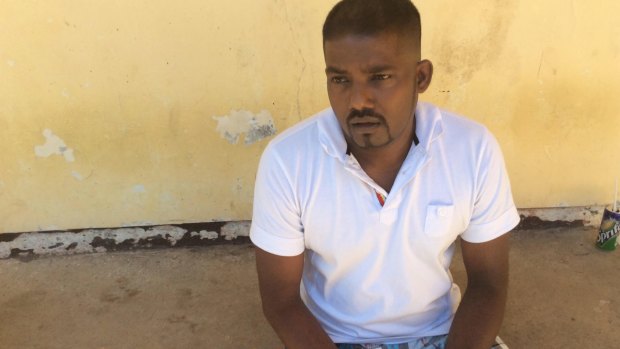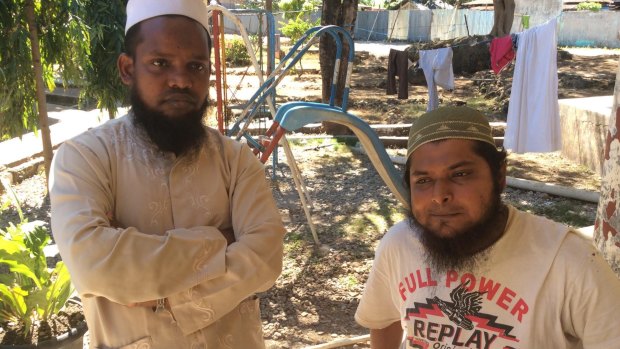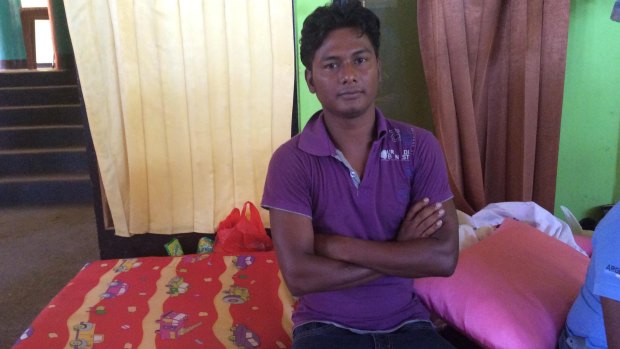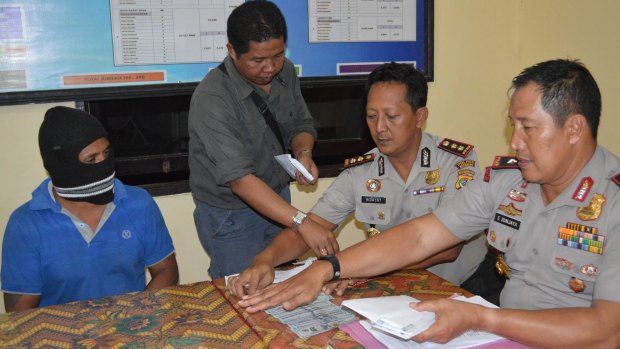This was published 8 years ago
Asylum seekers ask why Australia did not let them go to New Zealand
By Jewel Topsfield
- People smuggler cash: boat captain speaks
- Stacks police say were paid to send asylum seekers on a 'suicide mission'
- European countries surprised at payment allegations
- Tony Abbott refuses to say whether Australia paid people smugglers
Kupang, Indonesia: From the reef on Landu Island in West Rote, where the wooden vessel Kanak had run aground on rocks on May 31, the villagers on shore were so far away they looked like pygmies.
K. Kayuran, a Tamil asylum seeker from Sri Lanka, squinted anxiously at the beach. He had read there were still cannibals on Indonesia's remote islands.

Tamil asylum seeker K. Kayuran wanted passage to New Zealand.Credit: Jewel Topsfield
"Because we were so far away, I couldn't see whether they were modern people or indigenous cannibals so we were very scared," Mr Kayuran says. It was just one of many things that terrified him that day.
The Kanak was shifting on the reef and he was worried they would be cast adrift with no food or fuel.

Bangladeshis Muhammad Habib and Nazmul Hassan.Credit: Jewel Topsfield
Most of the 65 asylum seekers from Myanmar, Bangladesh and Sri Lanka were already swimming ashore, but Mr Kayuran had stayed on board with his pregnant wife V. Nadhiya and a handful of other women and young children. The women were crying with fear. They tried to call for help but couldn't go outside because the ship was tilting sideways.
The Navy warship HMAS Wollongong and an Australian customs ship had transferred the asylum seekers onto two small boats, which they say was woefully inadequate.
"All we had was a small chocolate and water," Mr Kayuran said. "It was not enough. If we had been stranded on an uninhabited island we would have died."
There were also no toilets: Ms Nadhiya, three months pregnant, had to use a box while Mr Kayuran covered her with a bed sheet.

Bangladeshi Mohammad Belayer Hossain.Credit: Jewel Topsfield
The fuel on one boat, the Jasmine, had run out and almost 70 people had been forced to cram into the Kanak. Then it hit a reef.
When the villagers came to their rescue, Mr Kayuran discovered that far from being cannibals they were incredibly kind.

Captain Yohanis Humiang (left) looks on as head of the people smuggling division of Nusa Tenggara Timur, Ibrahim, Rote police chief Hidayat and East Nusa Tenggara Timur police chief General Endang Sunjaya count money in June.
"They eat chicken and pigs," he says.
The people of Landu are mostly subsistence fishers and seaweed farmers, whose livelihoods were severely impacted by the Montara oil spill six years ago which killed fish and turned seaweed yellow. Despite their poverty they were incredibly generous, cooking and providing clothes for the asylum seekers.
Mr Kayaran, is now being processed at the immigration hostel, Inaboi, in Kupang. He has already eked out an existence in Malaysia for nine years, working illegally part-time when possible.
"If I have to spend another 10 years here, it would be easier to die."
All he wants, he says, is a peaceful life in New Zealand, where he can work legally and start again with their new baby.
Many of the asylum seekers Fairfax Media spoke to at Inaboi can't understand why the Australian navy and customs ships sent them back to Indonesia when they were still in international waters. They say they had no intention of going to Australia, which they knew closed its borders in 2013, but had read on the internet that New Zealand had a refugee quota program which offers 750 places per year.
Bangladeshis Nazmul Hassan and Muhammad Habib were among those who allege they saw an Australian official called "Agus" give envelopes of money to the captain, Yohanis Humiang and crew.
"We saw the crew put it inside his pocket. It was inside a white envelope," Mr Hassan said.
"Yohanis said we have to go back to Indonesia and Australia wants to pay for that."
The asylum seekers recall the mysterious "Mr Agus" as a man who worked for the Australians, spoke fluent Indonesian and wore jeans and a black T-shirt with sunglasses pushed up on his head.
Bangladeshi Mohammad Belayer Hossain paid people smugglers $US4000 ($5190) to take him to New Zealand. Now he is back in Indonesia. "I'm very sad – my money has finished," he says.
"I don't know why Australia stopped us. They should have let us go. They caught us, they turned us back and now they don't want anything to do with us."